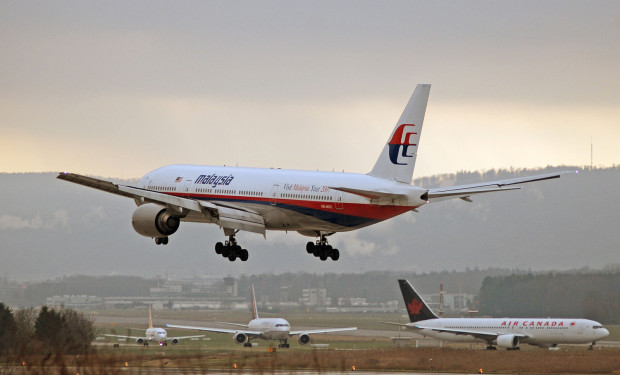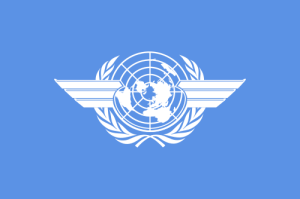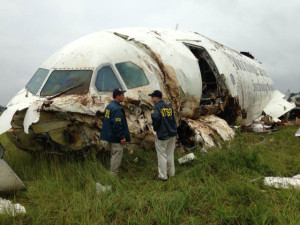Litigation is inevitable after the disappearance of Malaysia Airlines Flight MH370
The disappearance of Flight MH370 implicates a variety of legal issues ranging from investigatory responsibility to international civil procedure.
Weeks have passed since Malaysia Airlines Flight MH370 mysteriously disappeared en route to Beijing, China. Families of those aboard continue to grieve and search for answers. Search crews have scoured vast areas stretching from the eastern coast of Malaysia to the southern reaches of the Indian Ocean, and countless planes and ships—from tens of nations—have participated in the search and recovery effort.
The tragic disappearance of Flight MH370 implicates a variety of international legal issues, including which nation is responsible for leading the formal investigation once the wreckage is found and the liability of Malaysia Airlines (and possibly Boeing) to the families of Flight MH370 passengers.
When an aviation accident occurs internationally, there are international rules that control which nation leads the investigation.
Presently, crews from all over the world are engaged in a robust search and recovery effort in the Indian Ocean. Once any wreckage is located, there must be a formal investigation into the cause of the crash. When there is a civil aviation accident (or incident) in the United States, the National Transportation Safety Board (NTSB) maintains jurisdiction over the investigation. The NTSB “is an independent Federal agency charged by Congress with investigating every civil aviation accident in the U.S. and significant accidents in other modes of transportation—railroad, highway, marine, and pipeline.”
However, when an aviation accident (or incident) occurs internationally, there are international rules that control which nation leads the investigation. The NTSB might nevertheless participate in the investigation, but it does so in accordance with the International Civil Aviation Organization (ICAO). The ICAO is an agency of the United Nations and was established in 1944 at the Chicago Convention on International Civil Aviation (pdf). Currently, the ICAO has 191 member states (pdf). The list of member states includes four key actors currently involved in the Flight MH370 search: Australia, China, Malaysia, and the United States.
Annex 13 of the Chicago Convention provides the standards and recommended practices for investigating aircraft accidents.
The Chicago Convention established a wide range of rules related to air travel and safety. Annex 13 (pdf) of the Convention provides the standards and recommended practices for investigating aircraft accidents. For instance, it specifies the nations initially responsible for conducting the formal investigation and those nations that are allowed to participate in the investigation. When an accident (or incident) occurs “in the territory of a contracting state,” that state (the “state of occurrence”) “shall institute an investigation into the circumstances of the accident.”
In the context of Flight MH370, it is not entirely clear which nation, if any, is the “state of occurrence,” because it is still unclear where—let alone if—the plane crashed. If the plane went down in Malaysian territory, Malaysia, as an ICAO member state, would assume initial responsibility for conducting the formal investigation. Likewise, Australia would assume initial responsibility if the accident occurred in its territory. However, Chapter 5.1 of Annex 13 permits the state of occurrence to “delegate the whole or any part of the conducting of such investigation to another state by mutual arrangement and consent.” Therefore, if or when crews discover wreckage of Flight MH370, the investigation could still be delegated to the United States, and consequently, the NTSB.
Current search and recovery efforts are focused on a remote area of the Indian Ocean that is seemingly not within the territory of any nation. According to Annex 13 Chapter 5.3, “[w]hen the location of the accident or the serious incident cannot definitely be established as being in the territory of any State, the State of Registry shall institute and conduct any necessary investigation of the accident or serious incident.” The “state of registry” refers to the “State on whose register the aircraft is entered.” Presumably, Flight MH370’s state of registry is Malaysia. Chapter 5.3 also permits a state of registry to delegate its investigative responsibility to another state.
“The sole objective of the investigation of an accident or incident shall be the prevention of [additional] accidents and incidents.”
Even if the investigation is never delegated to the United States, the U.S. is still entitled to participate in the investigation. Since the beginning of 2013, the NTSB has participated in at least twelve foreign investigations. Chapter 5.18 of Annex 13 permits the “state of design” or “state of manufacture” of the aircraft to “appoint an accredited representative to participate in the investigation.” Flight MH370 was a Boeing Model 777, and Boeing is an American company. As a result, the United States constitutes both the “state of design” and the “state of manufacture” pursuant to Chapter 1.1 of Annex 13.
One of the many motivations for finding Flight MH370 is to simply find out what happened in order to prevent future occurrences. Indeed, according to Annex 13 Chapter 3.1, “the sole objective of the investigation of an accident or incident shall be the prevention of [additional] accidents and incidents.” By analyzing the flight’s “black box,” investigators can unravel the mystery and understand what happened on the night of March 8, 2014. Chapter 5.18 serves a crucial role by ensuring that the United States will at least have a seat at the table. The Boeing 777 is a popular model among commercial airlines, so if a mechanical defect caused Flight MH370’s demise, regulators could implement more thorough inspections to ensure future safety in active 777s.
The Montreal Convention specifies the extent of an airline carrier’s liability for damages resulting from the death or injury of passengers.
On Monday, March 24, 2014, Malaysian Prime Minister Najib Razak announced that Flight MH370 went down in the southern Indian Ocean. Though no wreckage has been found, Razak informed families that the lives of all the crew and passengers aboard were lost. Regardless of whether the wreckage is ever found, this tragedy will undoubtedly prompt families of those aboard Flight MH370 to file suit against Malaysia Airlines and, potentially, Boeing. A Chicago law firm has already filed a lawsuit seeking additional information about the disappearance and subsequent investigation of Flight MH370.
The first attempt to harmonize international aviation law was the Warsaw Convention of 1929 (pdf). Seventy years later, the ICAO adopted the Montreal Convention of 1999 (pdf) in an effort to “modernize and consolidate the Warsaw Convention.” In adopting the Montreal Convention, member states acknowledged “the importance of ensuring protection of the interests of consumers in international carriage by air and the need for equitable compensation based on the principle of restitution.” Among other provisions, the Montreal Convention specifies the extent of an airline carrier’s liability for damages resulting from the death or bodily injury of passengers.
Families of passengers have several options to choose from regarding which forum to select for bringing a lawsuit.
Article 33 of the Montreal Convention sets forth the scope of the Montreal Convention’s jurisdiction. Families of passengers have several options to choose from regarding which forum to select for bringing a lawsuit. In all cases, the chosen forum must be in the territory of a signatory nation in order for the Montreal Convention to apply. Article 33(1) allows a plaintiff to bring suit in the territory (1) where the carrier is domiciled; (2) where the carrier maintains its principal place of business; (3) where the carrier “has a place of business through which the contract has been made;” or (4) at the place of destination. Finally, when the claimed damages result from death or bodily injury to a passenger, Article 33(2) allows a plaintiff to bring suit in the territory where the passenger maintained his/her permanent residence, so long as the airline conducts business there.
By virtue of these rules, families of American passengers will likely be able to bring suit in the United States. These families need only establish that the passenger’s permanent residence was located in the United States, and that Malaysia Airlines conducts business in the United States. Benefits of suing in the United States include not only convenience for American families, but more importantly, the availability of higher damages awards, including punitive damages. By contrast, families of Chinese and Malaysian passengers—at least in a suit against Malaysia Airlines—will likely be relegated to Chinese and Malaysian courtrooms where the potential compensation would be much more limited.
When an airline accident causes death or bodily injury to a passenger, Article 21 of the Montreal Convention provides that the airline carrier is liable—up to a certain amount—without exclusion, limitation, or proof of fault.
The Montreal Convention will govern most of the future claims brought by families against Malaysia Airlines. Both China and Malaysia are signatories to the Montreal Convention, and most passengers were residents of one of these two nations. When an airline accident causes death or bodily injury to a passenger, Article 21 of the Montreal Convention provides that the airline carrier is liable—without exclusion, limitation, or proof of fault—for damages of up to 113,100 Special Drawing Rights (SDRs). The SDR is an “international reserve asset, created by the IMF in 1969 …. Its value is based on a basket of four key international currencies, and SDRs can be exchanged for freely usable currencies.” Currently, 113,100 SDRs equals approximately $175,000.
The burden is placed on the airline carrier in damages claims exceeding 113,100 SDRs to prove that it did not cause the damages or that a third party is at fault (see Article 21(2)). Absent such a showing, the airline carrier will be liable for all of the claimant’s damages. Regardless of fault, the airline will still be liable up to 113,100 SDRs.
“If the claim is brought in the U.S. courts, it’s of significantly more value than if it’s brought into any other court.”
Once search crews locate the wreckage of Flight MH370 and the responsible nation launches an investigation pursuant to Annex 13 of the Chicago Convention, it may become clear that a mechanical defect caused the accident. In that event, families would likely also bring suit against Boeing. The Montreal Convention does not govern claims against plane manufacturers, allowing families from passengers of all nations to sue Boeing, an American company, in the United States. Because the Montreal Convention will not bar such an action, even Chinese and Malaysian families might avail themselves of the potentially friendlier damages awards of the United States.
Wrongful death claims resulting from the Flight MH370 disappearance could vary significantly in value depending on the nation in which a claim is filed. As one observer notes, “[i]f the claim is brought in the U.S. courts, it’s of significantly more value than if it’s brought into any other court.” Indeed, “survivors of passengers who were U.S. residents could get as much as $10 million, while families of individuals who lived in other countries would get less than $1 million.”
Questions of jurisdiction and liability cannot be fully answered until we know more about what caused the tragic disappearance of Flight MH370.
Many questions will remain unanswered until the wreckage is located and the formal investigation begins. It is still unclear which nation will direct the formal investigation. Even once the investigation begins, it could take years for the investigating agency to analyze black box data and conclude its report on what caused the crash. For example, in the case of TWA Flight 800 in 1996, the NTSB investigation spanned four years. Even then, this report is likely inadmissible in an American courtroom. Questions of jurisdiction and liability cannot be fully answered until we know more about what caused the tragic disappearance of Flight MH370.








